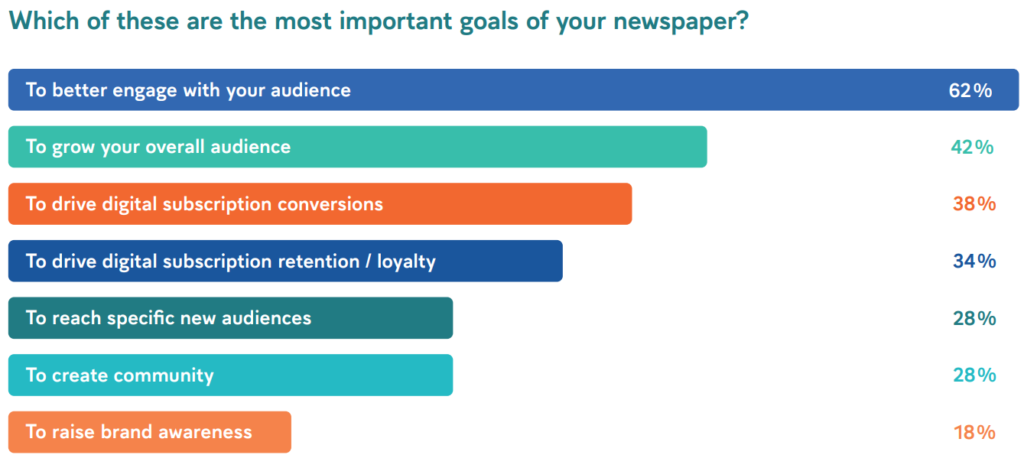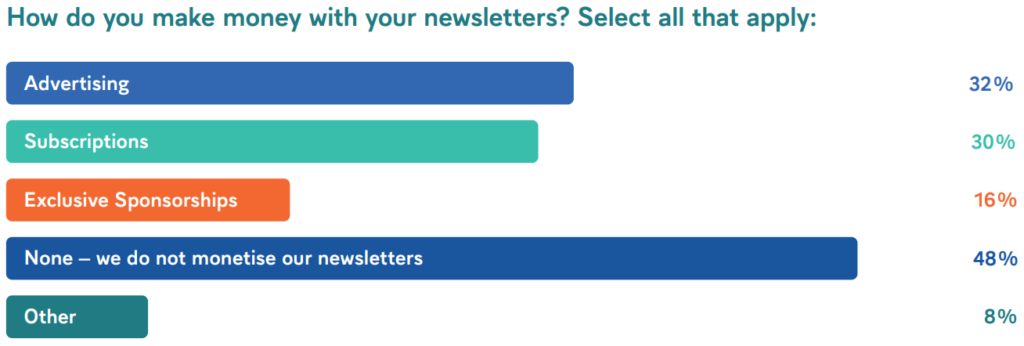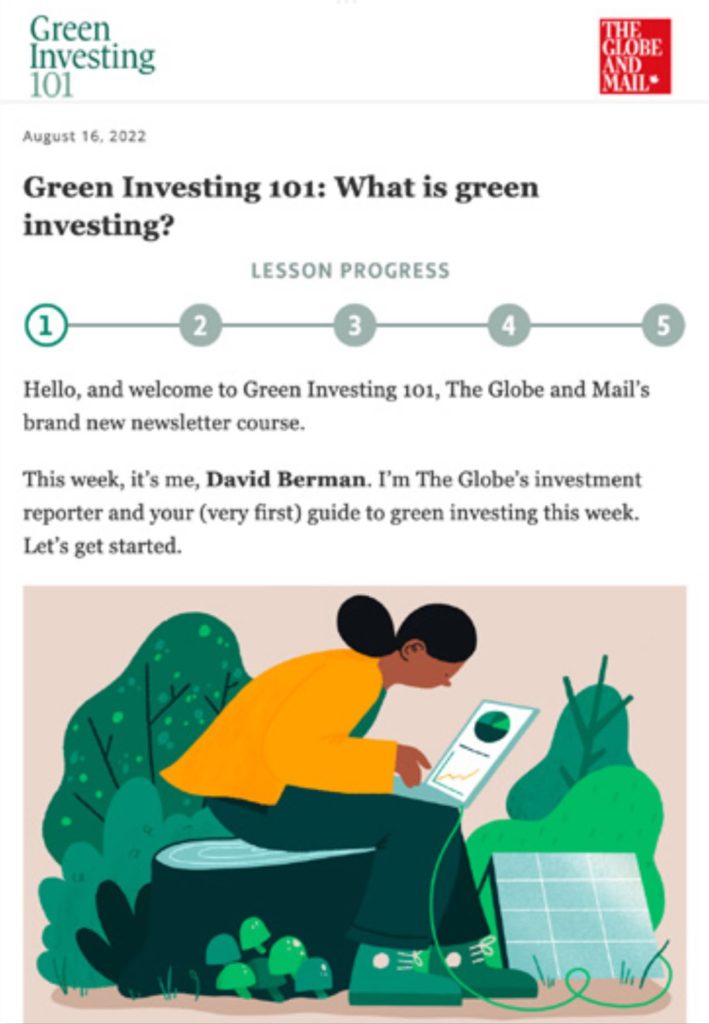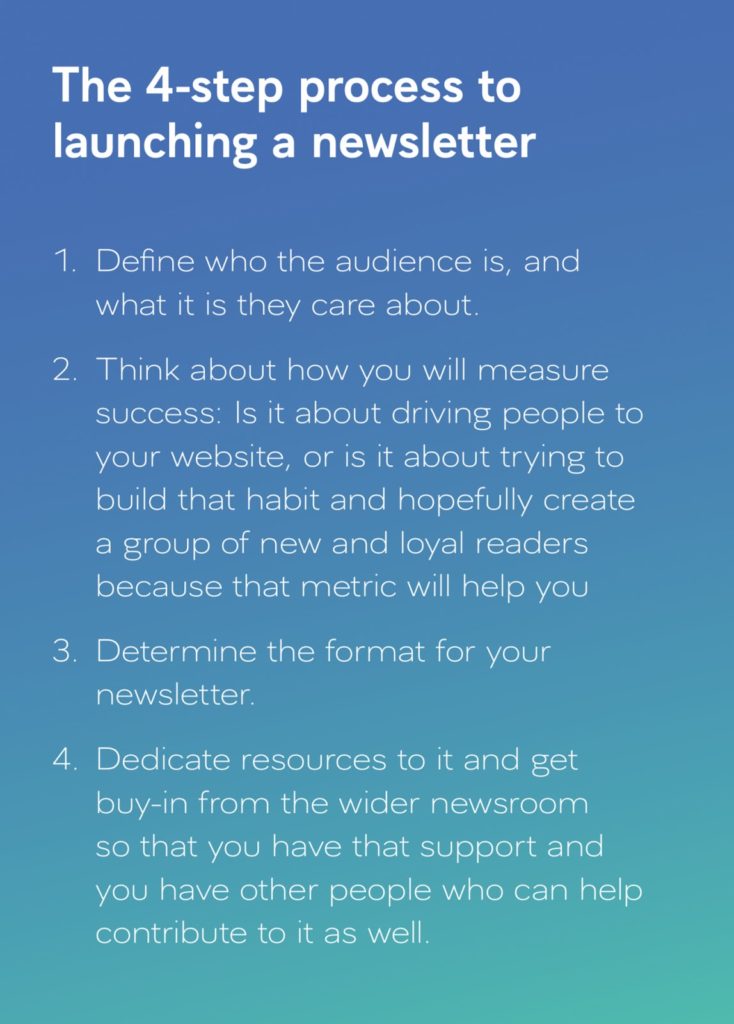|
Getting your Trinity Audio player ready...
|
Newsletters are an old tool that continue to be relevant. Many publishers across the world are using innovative newsletter strategies to drive traffic, grow subscribers, as well as generate ad revenue. A new WAN-IFRA report presents multiple case studies featuring actionable insights for publishers looking at launching new newsletters or improving their existing strategies.
In a survey conducted by WAN-IFRA earlier this year, 82% of publishers said they planned to launch at least one newsletter in 2022, 66% were looking at launching between one and five, and 12% were considering more than 10. The survey had 50 respondents from 22 countries around the world and its findings are shared in a new report.
The report Next-level Newsletters: Tips and strategies from news publishers around the world, takes a deep dive into how publishers around the world are using newsletters and shares best practices and strategies.
“Really powerful tool for publishers”
“Hardly a week goes by without some major news publishing house or another announcing they are launching a new newsletter of some kind,” writes author Brian Veseling. “Just in the past six or so months, we’ve seen new launches from The Guardian, the Financial Times, Le Monde, and dozens of others.”
Newsletters give publishers “new opportunities to recast their net and engage with readers across both tried and tested topics (news, business, politics and sport),” he adds, “as well as have a foundation for creating products for other specific audiences, or even to help you reposition yourself in the eyes of your readers.”
Newsletters are a really powerful tool for publishers. They are a great cross-functional tool with a little bit of everything for a publisher.
Dan Oshinsky, Consultant, Inbox Collective
Oshinsky lists the following key newsletter benefits for publishers:
- Drive traffic
- Increase loyalty
- Build habit
- Convert readers
- Retain readers
Most publishers (62%) say they use newsletters to create engagement. This is followed by growing overall audience (42%), and driving digital subscriptions (38%).
Over half of the respondents also use newsletters to generate revenue.
German publisher General-Anzeiger’s (GA) has a newsletter for foodies called Bonn Appetit. The publisher uses it to engage and grow its audience, as well as to create related products and services, like food events, wine tastings, and cooking classes. This summer GA organized two events that brought together local chefs, winemakers, and brewers to create in-person feasts for their foodie community. Both events sold out.
Bonn Appetit has shown steady growth routinely beating the publisher’s own goals for it, according to Sylvia Binner, Head of Editorial Development, GA. The newsletter crossed this year’s goal of 3,000 subscribers by the middle of the year encouraging the publisher to revise its target to 4,000 subscribers.
“Start to build a relationship with the audience”
Canada’s Globe and Mail publishes 32 different newsletters. “With each of these newsletters the goal is not necessarily to get people to click through,” says Melissa Stasiuk, Head of Programming and Audience. “Instead, we wanted to develop a habit. We wanted something that was delivered weekly that could start to build a relationship with the audience.” For example, its weekly climate newsletter is aimed at attracting younger audiences as they are passionate about the issue.
The publisher has created a Green Investing 101 short course which is delivered through a series of five weekly newsletter lessons. 75% of the people who signed up completed all five lessons.
The advantage of such a newsletter is that it doesn’t need to be constantly updated. “The great thing about newsletter courses,” Stasiuk says, “is that you can do all the work ahead of time, and then it’s automated after that.”
Each of these newsletters are aimed at specific audiences, and we chose the newsletter platform in particular because we didn’t want to be confined by the usual conventions of our newspaper or our website. We wanted them to be first-person, more conversational, and more informal in their tone.
Melissa Stasiuk, Head of Programming and Audience, Globe and Mail
“Fuels our membership program”
Argentinian publisher Red/Acción uses solutions journalism to counter news avoidance. “In Argentina, one can assume that around 65% of people under 35 years old frequently avoid news,” says founder Chani Guyot. The publisher has 42,000 subscribers and reaches around 6M monthly across all their platforms and social media channels. It bet big on newsletters right from the beginning (2018) and focused on author-driven newsletters when they were rare in Argentina.
We’ve managed to build a very engaged community, that’s why our open rate at least doubles the market average and that also fuels our membership program. That is still small, but very important and relevant in terms of how our newsroom has a conversation with our audience.
Chani Guyot, Founder, Red/Acción
“I think it’s a great way of putting together a minimum viable product for a content idea,” explains Guyot. “So if you have a content idea, you can test it by a newsletter and send it for two months, once a week and it’s very simple, very cheap.
“And on the other hand, it can be, and we try to work on this extreme, a very sophisticated community builder also. And in the middle, you can have dozens of kinds of newsletters. That’s one of the reasons that we love the format so much.”
“What drives them to come back”
Oshinsky suggests three key points that publishers need to consider before launching a newsletter:
- The format and publishing frequency of the newsletter.
- The target audience.
- The audience’s requirements, and how the newsletter is going to fulfill them.
“The publishers who answer those questions up front,” he says, “they identify a clear format and timing of it; they identify a clear audience; they identify a clear audience need – those are the publishers who tend to have a lot of success out of the gate with newsletters.”
He emphasizes that newsletters require time and effort to show results. “It does take a while to build a great newsletter strategy,” he says. “The thing that I tell a lot of my teams is that Direction is more important than speed. Where you are going is more important than how fast you get there.”
Most of the time that a user is coming to your site, the newsletter is going to be what drives them to come back to your site or stay on your site, so really making sure that you have a strong newsletter strategy, although it is the foundation in my opinion that you need to make sure that you have a really strong one.
Nicole Rocchio, Partnerships Lead, Google
The full report is available at WAN-IFRA:
Next-level Newsletters: Tips and strategies from news publishers around the world








